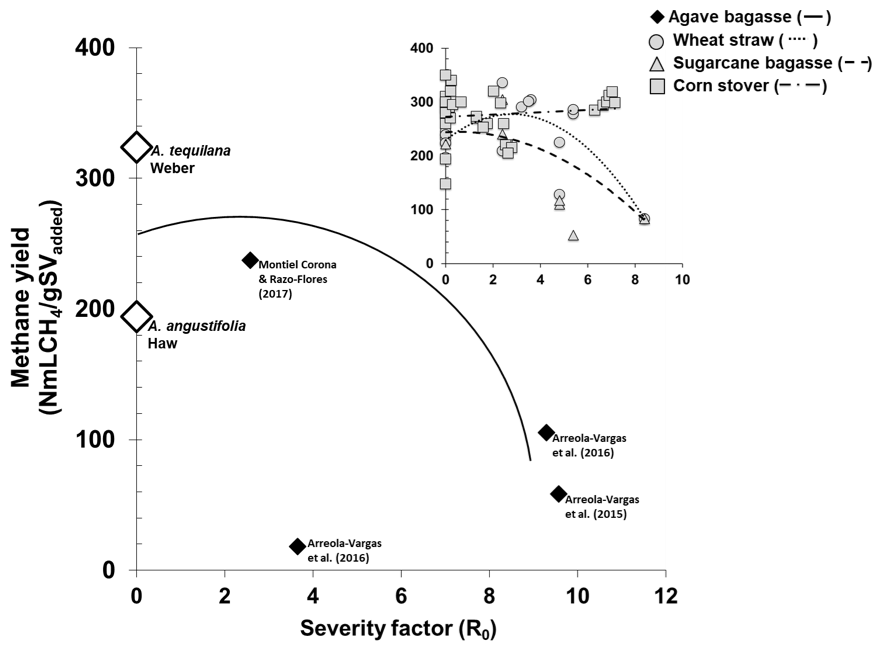Revista Mexicana de Ingeniería Química, Vol. 18, No. 3 (2019), Bio352
Co-digestion of Agave angustifolia haw bagasse and vinasses for biogas production from mezcal industry
|
A.V. Gómez-Guerrero, I. Valdez-Vazquez, M. Caballero-Caballero, F. Chiñas-Castillo, R. Alavéz-Ramírez, J.L. Montes-Bernabé
https://doi.org/10.24275/rmiq/Bio352
Abstract
 |
|
Mezcal is produced mostly from an Agave angustifolia Haw var. Espadin and generates large quantities of bagasse and vinasses that contaminate the environment. This paper presents a study on the co-digestion of Agave angustifolia Haw bagasse and vinasses for biogas production under minimal operation requirements (water and nutrients), typical in mezcal production facilities. Methane production results from Agave angustifolia Haw bagasse (AAHB) are compared to Agave tequilana Weber bagasse var. Azul (ATWB) from the Tequila industry at the same tested conditions. Small fibers of AAHB are more effective for producing methane than large fibers but adding high concentrations of vinasses stops the generation of methane. The resistance of fiber to biodegradation by microorganisms is partly observed in AAHB but not in ATWB. The type of inoculum had a strong effect on the methane yield. ATWB plus granular sludge gave rise to a potential methane production 65% more than AAHB plus granular sludge.
Keywords: Agave angustifolia Haw, bagasse, methane, co-digestion, vinasses.
|
|
 |

